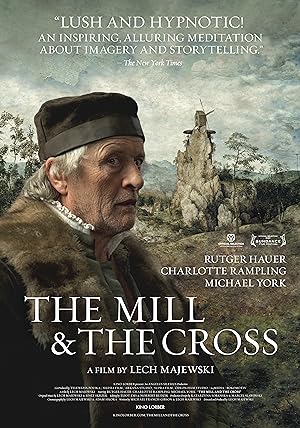The Mill and the Cross is not for everyone and does not present a traditional cinematic narrative. There is limited dialogue between Pieter Bruegel, a historically famous painter, and his patron, Nicolaes Jonghelinck, which acts as a guide for the viewer to interpret the silent, stylistic events. There are several stories being told: the story of how Bruegel was inspired by current events to visually interpret Biblical events as a source of hope in a time of persecution; the passion of Christ from the perspective of the people-not central to anyone except the mother of Christ and the story of how we look at art created during a distant historical time period that tells a story about an even more distant time period. The Mill and the Cross emphasizes that the famous story is not the central one when its events unfold, but the lives of ordinary people. As each image shot with a painterly eye reminiscent of Peter Greenaway’s work, but less sensational and graphic, unfolds, inanimate objects are gradually come to life as people move and reveal themselves as alive and not objects. If you decide to tackle a viewing of The Mill and The Cross, I would suggest that you limit your distraction, exercise a great deal of patience and be prepared for a movie dominated by imagery and little to no explanation.





